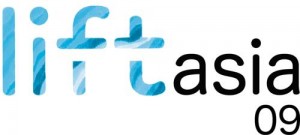Webtoons are digitized comics that have become a hit in South Korea. It has brought a renewal to comics in the nation, and its influence now spreading over its borders as readers worldwide are becoming fans of the phenomenon. However, since its beginnings, webtoons have evolved quickly – to now include animated effects as well as opportunities for companies to sponsor content to boost their brands.
It’s time to read from top to bottom – the art of webtoons.
Were you ever lost while reading Manga (Japanese comic books) and discovered that it was actually supposed to be read from right to left? It takes some time for those who read from left to right to become accustomed to reading backwards. To add onto the literary confusion, there’s another reading style you may need re-orient your reading style to. Its origins are from Korea – the nation where digital trends appear over night.
What is a webtoon?
The word ‘webtoon’ is a compound deriving from the two following words – web and cartoon. As the name implies, it is a cartoon distributed throughout the internet, allowing easy accessibility to users through their mobile phones or their PCs. Korean Click has reported that about 4.58 million people read webtoons on the Naver app alone every month, with 9.4 million unique daily visitors across all platforms. There are two main portals that provide a platform for webtoons, being Naver and Daum – both are the two largest, and beginning to offer webtoons in multiple languages to satisfy a growing demand abroad. Some webtoons have become so popular abroad that they are on their way to the big screen.
A digital refresh for comics
Unlike in the USA and Japan, published comics were not a big hit in Korea in the late twentieth-century, since they were often perceived as a subculture. However, at the dawn of the new millennia, the rise of the internet had changed its once-negative outlook. Although more and more people continued to flock to the internet to satisfy their cravings for entertainment, there wasn’t much content online at that time to enjoy. In order to entertain online users, netizens decided to share their own creations on blogs.
Since web programs at the time offered only a minimal amount of features, the amateurs decided to design their cartoons in a top-to-bottom format. At the same time, major websites such as Chosun Ilbo attempted to adopt a webtoon platform to bring traffic to their service everyday without fail. Traffic brought by webtoons helped audiences reach other services offered on the platform, and helped portals earn money by selling ad slots on their platform. As a result, some webtoonists became popular and garnered a lot of subscribers. And in 1999, Manhwa Chosun, a subsidiary website for Chosun Ilbo, was created just for webtoons and scouted for famous cartoonists. The content produced by cartoonists on these pages are what coined the term.
Webtoons are free and easy to consume, packed with cool digital effects.
After several years of growth, webtoons have become a big hit in Korea. There are three main reasons as to why webtoons have recently hit stardom.
Free Episodes
Most webtoons are free, particularly if it’s an ongoing series. Some webtoons that garnered a lot of popularity while being published were charged after the end of the series, generally costing about a hundred won (around nine cents USD) per episode. Since it is generally very cheap – if not free, anyone can enjoy webtoons online. However, as they continue to garner interest, companies and designers alike continue to find ways to strike a profit in the webtoon phenomenon.
Snack Culture
Webtoons are the perfect consumer good – as snacks are the perfect midnight treat. Just as how people in South Korea generally prefer to have everything delivered instantaneously, people in general are not interested in investing too much time on a single story. Thus a new culture has appeared, a culture of enjoying simple and quick-to-finish content – often referred to as snack culture. Webtoons have evolved to satisfy this new lifestyle of the Internet generation; offering new content on a daily basis. Webtoons are perfect for readers of the digital age as each episode for a single webtoon is uploaded on a weekly basis and new episodes for numerous webtoons are updated everyday on a single platform such as Naver Webtoon. Webtoons generally take about three to five minutes to read each episode. In fact, users visit the Naver Webtoon App for an average of 382 minutes every month – meaning that they spend about twelve minutes daily catching up on their favorite cartoons – about three to four webtoons each day.
Visual Effects
The advantage of distributing comics online is the flexibility of a digital platform, allowing webtoonists to insert visually appealing motion effects. Since webtoonists can now add visual effects through a digital medium using the web, web interfaces created a new spaces for artists to explore and experiment with. Below are the three examples of animations that are favored by both webtoonists and readers alike.
Suspensive Scrolling
This is the main effect that differentiates webtoons from all other comics. When webtoons were in their earlier years, their creators did not implement this feature into their webtoons, leaving it only to progress through the webtoon. However, since readers must scroll to continue reading the comic, using the scroll to their advantage provides visual appeal to the comic. Compared to its original cartoon format, webtoons provide users a narrower, longer visual perspective. This can drive suspense and curiosity to users in tense, impactful moments in a webtoon. Webtoonists sometimes create parts of their stories horizontally, tilting parts of the webtoon by 90 degrees and making readers feel uneasy and awkward – adding an extra emotional effect to their story. Below and above are two examples where webtoonist Ilkown Ha, known for his creative experiments colors, patterns, photos and orientation on web platform, has played with orientation to create a sense of unease.
BGM, Buzz Effect
This effect came out when Naver first launched an application for their own webtoon site. Webtoonists can select music that suits the theme of the episode and create an ambience that goes beyond the picture. Also, webtoons give a buzz effect at certain scroll point with sound effects for a particular scene in the comic. This, something not available on paper media, drawing readers into the story and making it more engaging. A webtoon that uses these types of special effects quite often is Gadamhangseol (가담항설) on Naver webtoons.
Animated Effects
In 2015, famed webtoon writer Ilkwon Ha introduced a new type of webtoon, the animated webtoon. Animated webtoons interact with the reader’s as they scroll through the webtoon, producing animated effects. This effect has since been used in various genres of webtoons, but has been most famous when used in horror webtoons. For example, while scrolling a pale hand will suddenly appear on the screen and and seem to shake the phone. For those who are curious about it and want to see the hand in motion, check it out in the link below. You need to have Adobe Flash on (and a strong dose of courage) in order to see the animation on your computer: Click Here.
Webtoon, a new platform for advertisements
Paid Webtoons
If webtoons are free of charge, how do the writers gain profit from uploading them? As mentioned above, webtoons’ first two mainstream platforms were developed by Daum and Naver. They hired cartoonists to write stories every week to gain traffic, which is generally important for search engines. Later on, they began to increase profits by adding banner ads, product placement and brand marketing to famous webtoons.
In 2013, Lezhin developed a new webtoon application with a unique charging system. Their main slogan was “to provide high-quality content at a cost”. This did not mean that all the contents were charged. Users can still read the episode for free every week, just like the existing Webtoon sites; the difference here is that users can pay certain amount of money to read a few episodes ahead. So for those who are willing to pay extra money out of anticipation, can enjoy the episodes as much as they want. Whereas those who do not want to spend much money can stay patient for another seven days to pass for the next episode.
Raising Brand Awareness
Each webtoonist also makes money through product placements or banner advertisements, requested from a number of brands. As webtoon platforms have high number of daily and monthly active users, many brands are using webtoons to increase brand awareness. Some even release brand webtoons in collaboration with famous webtoonists. Above is the example of Air BnB’s brand webtoon. Viewers are not against this content, and often consider sponsored comics as those made without sponsorship. This contrasts other forms of paid advertising online.
In addition to creating harmony between comics and the digital world, cartoons have completely re-positioned themselves from its subculture to a part of life in South Korea. The market for brilliant content is making outstanding growth year over year, both domestically and worldwide. Some webtoons have already an international following on Line’s international platform on Line’s Webtoon website. Line allows webtoon fans to translate episodes of their favorite webtoons for international users on this platform.
It may be an undeniable fact that webtoons will soon become mainstream all over Asia.
As some say, whether webtoons can become the next Japanese manga or Anime might be up to how well the content can commercialize and adapt into other forms of entertainment. For instance, Japanese manga has garnered an almost mainstream placement in non-Asian countries thanks to the institutionalized concept of ‘Anime’. Pokemon is a perfect example of popular Anime abroad. However, recently Korean webtoons are also making its own progress in commercialization. Although there are still ups and downs to these attempts, some webtoons such as ‘Cheese in the trap‘ or ‘Miseng‘ have become dramatized recently and gained high recognition in even the international market. It may be an undeniable fact that webtoons will soon become mainstream all over Asia.

















